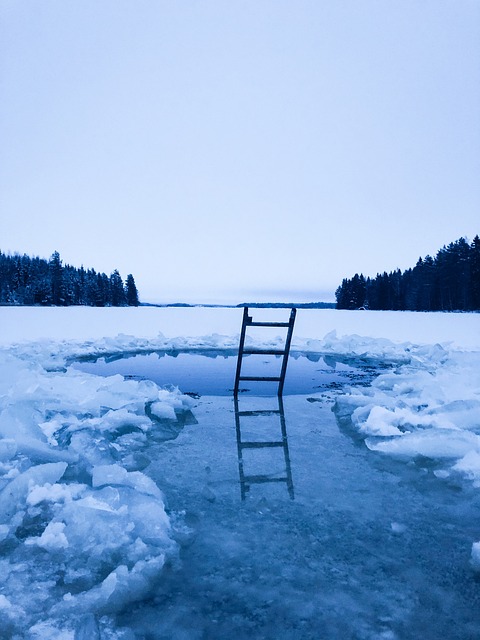How It Works, Types And Benefits
Fill in the gaps in the article with the words in bold below:
encompasses rinse alleviate plunge moderate
attain enhancement cautions soreness immersion
From social media influencers posting pictures of themselves taking ice baths to a documentary about Wim Hof, a cold water therapy retreat host and guide, cold water therapy is emerging as a popular health trend. A growing body of research suggests cold water therapy may have various health benefits, including mood 1. boost, stress reduction and metabolic and heart health support.
Read on to discover what experts say about cold water therapy, including the types of treatments available, science-supported health benefits of the practice and whether incorporating an icy 2. jump into one’s wellness routine may be beneficial.
What Is Cold Water Therapy?
“Cold water therapy, also known as cold hydrotherapy, is the practice of using water around 59 degrees Fahrenheit to treat health conditions or stimulate health benefits,” says Wan Na Chun, an Indianapolis-based registered dietitian and personal trainer who recommends cold water therapy in her practice. “Studies show that cold water 3. submersion [can] lead to decreased stress levels after a one-hour session and induce significant physiological and biochemical changes in the body, such as improved blood pressure, metabolism and peripheral blood flow,” she adds. (…)
Types of Cold Water Therapy
The origins of using cold water therapy for health and muscle recovery may date back to ancient Greece, according to research. Types of cold water therapy range from a quick spray or 4. splash to full-body immersion in icy water.
Cold water therapy is a form of cryotherapy, a broad field that 5. includes using cold therapies to 6. obtain health and wellness benefits. Examples of cryotherapy include cold water immersion, applying ice/cold to the skin and other general uses of cold for therapeutic needs. “Cold water immersion and cryotherapy chambers are generally considered the most effective forms of cold therapy, as they provide the most significant benefits,” says Chun.
(…) Cold Water Therapy (…) May Aid Muscle Recovery and Decrease Pain
In a 2016 study in Medicine, participants who performed a set amount of exercise and then immersed themselves in a cold water pool (no warmer than 59 degrees Fahrenheit) afterward reported experiencing less muscle 7. ache compared to those who didn’t undergo hydrotherapy.
The body regulates temperature through the same nerve pathways that signal pain, which is why icing injuries helps 8. reduce pain (…).
Cold water therapy works to 9. ease pain by constricting blood vessels and reducing blood flow to peripheral body parts. Research suggests this blood flow redistribution improves oxygenation of muscles and may enhance exercise performance. (…)
Cold water therapy is safe, although the American Heart Association 10. warns that the most dangerous time is within the first 60 seconds until breathing regulates. Speak with a trusted health care provider prior to practicing cold water therapy to ensure it’s a safe and beneficial option for your unique goals. (…)
Read the whole article/check your answers: https://www.forbes.com/health/wellness/cold-water-therapy/
Key: 1. enhancement; 2. plunge; 3. immersion; 4. rinse; 5. encompasses; 6. attain; 7. soreness; 8. moderate; 9. alleviate; 10. cautions
Glossary
- to induce – to cause
- compelling – convincing
Practice makes perfect
Watch:
and answer the questions below:
- Where are the coldest materials in the world found?
- How do these extreme temperatures give scientists a window into the inner workings of matter?
- What is temperature really a measure of?
- Why is outer space too warm to create ultra-low temperatures?
- How does a laser beam cool down moving atoms?
- What is a magneto-optical trap and how does it work?
- What are some practical applications of cold atoms?
- How have ultracold atoms contributed to our understanding of the laws of physics and the universe?
Use the words in bold to complete the gaps in the sentences below:
caution compelling attain soreness plunge alleviate
1. Kate was complaining of terrible ……………. in her neck and shoulders.
2. The most ………….. reason not to buy another computer is cost.
3. He really enjoyed his ………. in the pool.
4. I would ……… against implementing such a plan.
5. Take the medicine, it’ll will ……….. the pain and allow you to rest.
6. Very few people ……… such a position before the age of 40.
Key: 1. soreness; compelling; 3. plunge; 4. caution; 5. alleviate; 6. attain
Explore more to create your own teaching-learning experience!
Winter Wakes Up Your Mind–and Warm Weather Makes it Harder to Think Straight
How temperature shapes difficult decisions
Read:
https://www.scientificamerican.com/article/warm-weather-makes-it-hard-think-straight/
(3701)





